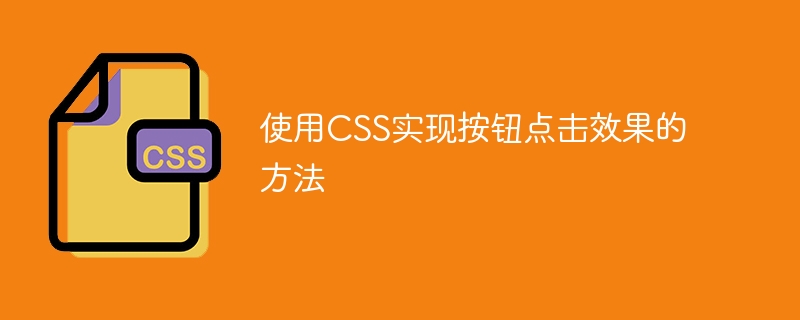

How to use CSS to achieve button click effects
Foreword:
In modern web design, buttons are one of the indispensable elements in page interaction. A good button style can not only improve the user experience, but also enhance the visual effect of the page. This article will introduce a method of using CSS to achieve button click effects, adding dynamics and interactivity to the page.
1. Basic button style
Before realizing the button click effect, you need to define the basic button style first. You can use CSS pseudo-class selectors to define styles for buttons. Commonly used pseudo-classes include :hover and :focus.
Sample code:
.button {
padding: 10px 20px;
background-color: #2196f3;
color: white;
border: none;
border-radius: 5px;
cursor: pointer;
}
.button:hover {
background-color: #0d8bf2;
}
.button:focus {
outline: none;
box-shadow: 0 0 5px #0d8bf2;
}Analysis:
.button, which represents the style of the button. 2. Click effect
The click effect of the button can be achieved using the CSS pseudo-class selector: active. The :active pseudo-class takes effect when the button is pressed.
Sample code:
.button:active {
background-color: #0b6de1;
transform: translateY(2px);
}Analysis:
3. Complete code example
<button class="button">按钮</button>
.button {
padding: 10px 20px;
background-color: #2196f3;
color: white;
border: none;
border-radius: 5px;
cursor: pointer;
}
.button:hover {
background-color: #0d8bf2;
}
.button:focus {
outline: none;
box-shadow: 0 0 5px #0d8bf2;
}
.button:active {
background-color: #0b6de1;
transform: translateY(2px);
}Analysis:
Conclusion:
By using CSS pseudo-class selectors and transform attributes, we can easily achieve the click effect of buttons. This method is not only simple and easy to understand, but also can achieve various button effects by adjusting the value of the style attribute. I hope this article can help you achieve button click effects in your page design.
The above is the detailed content of How to use CSS to achieve button click effects. For more information, please follow other related articles on the PHP Chinese website!
 What are the Chinese programming languages?
What are the Chinese programming languages?
 Java-based audio processing methods and practices
Java-based audio processing methods and practices
 How to display html in the center
How to display html in the center
 What are the microcontroller programming software?
What are the microcontroller programming software?
 How to get the input number in java
How to get the input number in java
 How to delete a file in linux
How to delete a file in linux
 Python thread pool and its principles and uses
Python thread pool and its principles and uses
 Solution to the problem that win7 system cannot start
Solution to the problem that win7 system cannot start
 js method to get array length
js method to get array length




